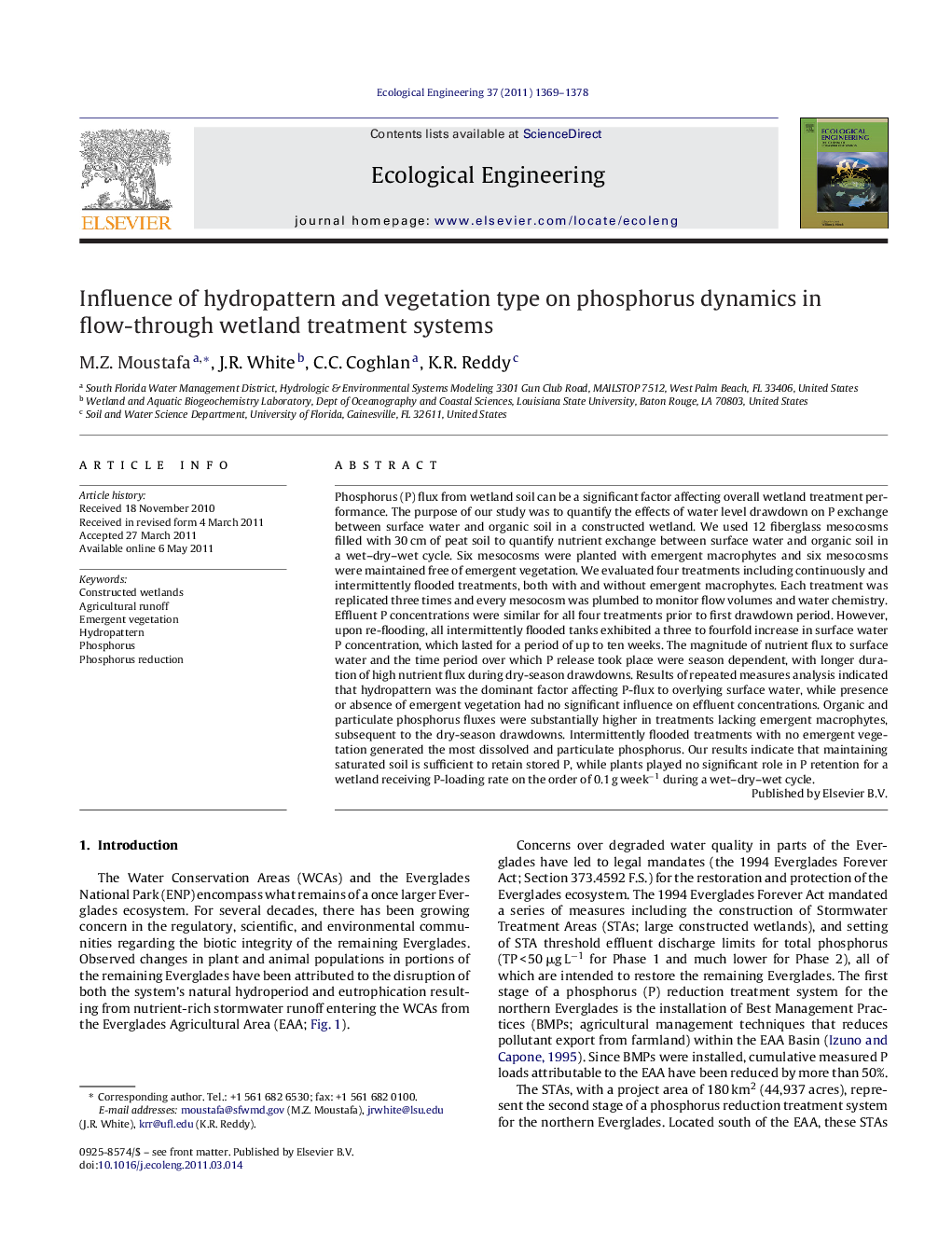| Article ID | Journal | Published Year | Pages | File Type |
|---|---|---|---|---|
| 4390250 | Ecological Engineering | 2011 | 10 Pages |
Abstract
Phosphorus (P) flux from wetland soil can be a significant factor affecting overall wetland treatment performance. The purpose of our study was to quantify the effects of water level drawdown on P exchange between surface water and organic soil in a constructed wetland. We used 12 fiberglass mesocosms filled with 30 cm of peat soil to quantify nutrient exchange between surface water and organic soil in a wet-dry-wet cycle. Six mesocosms were planted with emergent macrophytes and six mesocosms were maintained free of emergent vegetation. We evaluated four treatments including continuously and intermittently flooded treatments, both with and without emergent macrophytes. Each treatment was replicated three times and every mesocosm was plumbed to monitor flow volumes and water chemistry. Effluent P concentrations were similar for all four treatments prior to first drawdown period. However, upon re-flooding, all intermittently flooded tanks exhibited a three to fourfold increase in surface water P concentration, which lasted for a period of up to ten weeks. The magnitude of nutrient flux to surface water and the time period over which P release took place were season dependent, with longer duration of high nutrient flux during dry-season drawdowns. Results of repeated measures analysis indicated that hydropattern was the dominant factor affecting P-flux to overlying surface water, while presence or absence of emergent vegetation had no significant influence on effluent concentrations. Organic and particulate phosphorus fluxes were substantially higher in treatments lacking emergent macrophytes, subsequent to the dry-season drawdowns. Intermittently flooded treatments with no emergent vegetation generated the most dissolved and particulate phosphorus. Our results indicate that maintaining saturated soil is sufficient to retain stored P, while plants played no significant role in P retention for a wetland receiving P-loading rate on the order of 0.1 g weekâ1 during a wet-dry-wet cycle.
Related Topics
Life Sciences
Agricultural and Biological Sciences
Ecology, Evolution, Behavior and Systematics
Authors
M.Z. Moustafa, J.R. White, C.C. Coghlan, K.R. Reddy,
